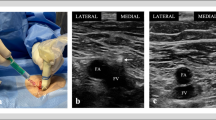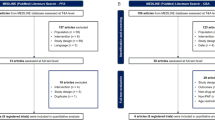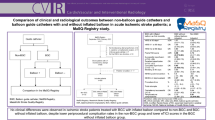Opinion statement
Ever since the observation was made linking a higher prevalence of a patent foramen ovale (PFO) in younger individuals with cryptogenic stroke (CS), there has been a vigorous debate as to the role the PFO plays and a search for the optimal management strategy to prevent recurrent CS. Data from observational studies from the past two decades have demonstrated the superiority of percutaneous device closure over medical therapy. The recent publication of three randomized controlled trials (RCTs), which failed to demonstrate the superiority of percutaneous closure has reignited the controversy as to how best treat these patients. In this article, we will review the contemporary literature from the past three years including the results from new meta-analyses of medical therapy and device closure. In addition, we will review the three published randomized control trials to date (ie, CLOSURE I, the PC trial, and RESPECT) along with a meta-analysis of their results. While on primary intention-to-treat analysis, the three RCTs failed to demonstrate a superiority of percutaneous PFO closure vs medical therapy, a closer look at the data seems to suggest a trend toward benefit. We come to the conclusion that the issue of optimal treatment of PFO in patients with CS is far from settled and is unlikely to be a “one size fits all” approach due to the heterogeneity of this condition. In our opinion, based on the entirety of available data, both observational and randomized, there is likely a role for percutaneous device closure in select patients with CS in whom a PFO is the likely cause of their first stroke and will remain a significant risk for recurrent neurologic events. The article will go on to review current indications for atrial septal defect (ASD) closure and will highlight safety, efficacy and caveats regarding this technique.

Similar content being viewed by others
References and Recommended Reading
Papers of particular interest, published recently, have been highlighted as: • Of importance •• Of major importance
Sacco RL, Adams R, Albers G, et al. Guidelines for the prevention of stroke in patients with ischemic stroke or transient ischemic attack. A statement for healthcare professionals from the American Heart Association/American Stroke Association Council on Stroke: cosponsored by the Council on Cardiovascular Radiology and Intervention. Stroke. 2006;37:577.
O'Gara PT, Messe SR, Tuzcu EM, et al. Percutaneous device closure of patent foramen ovale for secondary stroke prevention. A call for completion of randomized clinical trials. A science advisory from the American Heart Association/American Stroke association and the American College of Cardiology. Circulation. 2009;119:2743–7.
Kitsios GD, Dahabreh IJ, Abu Dabrh AM, et al. Patent foramen ovale closure and medical treatments for secondary stroke prevention. A systematic review of observational and randomized evidence. Stroke. 2012;42:422–31. Meta-analysis of 59 observational studies of device closure and medical therapy along with CLOSURE I.
Agarwal S, Bajaj NS, Kumbhani DJ, et al. Meta-analysis of transcatheter closure versus medical therapy for patent foramen ovale in prevention of recurrent neurological events after presumed paradoxical embolism. J Am Coll Cardiol Intv. 2012;5:777–89.
Furlan AJ, Reisman M, Massaro J, for the CLOSURE I Investigators, et al. Closure or medical therapy for cryptogenic stroke with patent foramen ovale. N Engl J Med. 2012;366:991–9. RCT of percutaneous closure using the STARFlex device vs medical therapy (aspirin, warfarin or both). First of RCTs to report result.
Carroll JD, Saver J, Thaler DE, et al. Closure of patent foramen ovale versus medical therapy after cryptogenic stroke. N Engl J Med. 2013;368:1092–100. RCT comparing medical therapy and Amplatzer PFO closure device. Negative intention to treat but positive secondary analyses.
Meier B, Kalesan B, Mattle H, et al. Percutaneous closure of patent foramen ovale in cryptogenic embolism. N Engl J Med. 2013;l368:1083–91. European RCT with negative result for closure.
www.clinicaltrials.gov. Accessed 23 Sept 2013.
Furlan AJ, for the CLOSURE I Investigators. Interventional and new approaches to stroke prevention. Stroke. 2013;44:S45–7.
Thaler DE, Wahl A. Critique of closure or medical therapy for cryptogenic stroke with patent foramen ovale. The hole truth? Stroke. 2012;43:3147–9.
Wahl A, Juni P, Mono ML, et al. Long-term propensity score-matched comparison of percutaneous closure of patent foramen ovale with medical treatment after paradoxical embolism. Circulation. 2012;125:803–12.
Kitsios GD, Thaler DE, Kent DM. Potentially large yet uncertain benefits. A meta-analysis of patent foramen ovale closure trials. Stroke. 2013;44:1–4. Meta-analysis of all three RCTs to date.
Anzai H, Child J, Natterson B, et al. Incidence of thrombus formation on the CardioSEAL and the Amplatzer interatrial closure devices. Am J Cardiol. 2004;93:426–31.
Roman Peirone A, Fontes PS, Augusto CC. Outcomes after transcatheter ASD closure. Interv Cardiol Clin. 2013;2:39–49.
Tobis J, Shenoda M. Percutaneous treatment of patent foramen ovale and atrial septal defects. J Am Coll Cardiol. 2012;60:1722–32.
Crawford GB, Brindis RG, Krucoff MW, et al. Percutaneous atrial septal occluder devices and cardiac erosion: a review of the literature. Catheter Cardiovasc Interv. 2012;80:157–67.
Messe S, Kent DM. Still no closure on the question of PFO closure. N Engl J Med. 2013;368:1152–3.
Warnes CA, Williams RG, Bashore TM, et al. ACC/AHA Guidelines for the management of adults with congenital heart disease: executive summary. Circulation. 2008;118:2395–451.
Butera G, Biondi-Zoccai G, Sangiorgi G, et al. Percutaneous vs surgical closure of secundum atrial septal defects: a systematic review and meta-analysis of currently available clinical evidence. EuroIntervention. 2011;7:377–85.
Butera G, Romagnoli E, Saliba Z, et al. Percutaneous closure of multiple defects of the atrial septum: procedural results and long-term follow-up. Catheter Cardiovasc Interv. 2010;76:121–8.
Gore Helex Septal Occluder. FDA Scientific Advisory Panel. Atrial Septal Defect Occluders Safety and Effectiveness. W.L. Gore & Associates, Inc Panel Pack. April 12, 2012.Available at: www.fda.gov/downloads/advisorycommittees/committemeetingmaterialmedicaldevices/medicaldeviceadvisorycommittee/circulatorysystemdevicepanels/ucm30939.pdf. Accessed 23 Sept 2013.
Balint OH, Samman A, Haberer K, et al. Outcomes in patients with pulmonary hypertension undergoing percutaneous atrial septal defect closure. Heart. 2008;94:1189–93.
Compliance with Ethics Guidelines
Conflict of Interest
Dr. Asad A. Rizvi and Dr. Ronan Margey each declare no potential conflicts of interest relevant to this article.
Human and Animal Rights and Informed Consent
This article does not contain any studies with human or animal subjects performed by any of the authors.
Author information
Authors and Affiliations
Corresponding author
Additional information
This article is part of the Topical Collection on Adult Congenital Heart Disease
Rights and permissions
About this article
Cite this article
Rizvi, A.A., Margey, R. PFO and ASD Closure in Adulthood: Where Do We Stand?. Curr Treat Options Cardio Med 16, 295 (2014). https://doi.org/10.1007/s11936-014-0295-4
Published:
DOI: https://doi.org/10.1007/s11936-014-0295-4




